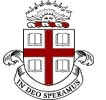 |
|
 |
|
Attending: Nancy Amstrong, Russell Church, Anne Fausto-Sterling, Richard Fishman, Peter Gromet, John Savage, Rajiv Vohra, and Michael White.
Reports were given by the following individuals at the indicated universities
| Member | Institutions | Nancy Amstrong | *Cornell | Dartmouth | Russell Church | Brown | *Stanford | Richard Fishman | *Duke | Williams | Peter Gromet | Amherst | *Berkeley | Rajiv Vohra | *Chicago | *Columbia | Michael White | Princeton | *Penn |
After reviewing these universities, we decided that the large universities identified with an * do not provide good models for Brown.
Here are some highlights of schools that do provide good models:
DARTMOUTH
Charge: Recommends on appointments, promotion, tenure, leaves
Responds to issue brought by President
Consults with President on issues raised by Faculty
Chooses a member of COP (below) as alternate to President
as presiding officer at Faculty meetings.
Charge: Recommends on general policies affecting Faculty
Recommends to Faculty changes in rules of governance
Appoints Faculty committees and hears committee reports
AMHERST
Charge: Advises President
Recommends on tenure and promotion
Nominates faculty to other elected committees,
Appoints faculty to other committees
Sets Faculty meeting agendas
Reviews recommendations of other committees
Reviews cum laude degrees for uniformity
Priorities and Resources
WILLIAMS
Faculty are appointed to all other committees. Each spring faculty specify
their preferences for non-elective standing committees. The President through
the Dean of the Faculty in consultation with the FSC appoints faculty to these
committees.
FCC has divisional representatives and at-large members, the latter appointed
by the FSC. FCC has 8 faculty, 10 administrators serving ex-officio
PRINCETON
We agreed with the general governance outline given in the minutes of
our meeting of May 10, namely, some form of academic planning council
consisting of faculty and academic administrators, a budget priorities
committee, and committees on faculty legislation. We also agreed that
faculty legislative functions should be subdvided into the following
categories:
We also agreed to develop through email communications the functions that
should be handled within each subdivision.
Our next three meetings will be on May 29 and June 5 and 12 from 2-4pm
in the English Department.
Submitted by
Has a weak Provost and strong Dean of the Faculty (DoF)
who works with
three associate deans that represent divisions within Arts and Sciences.
Major faculty committees:
Committee Advisory to President
Members: DoF + 6 tenured profs appointed by President for 3 years
+ 2 profs appointed from list determined by Faculty vote
Committee on Organization and Policy (COP)
Members: DoF + 9 faculty (3 elected from each division)
It's most important committees are the Committee of Six, the Committee on
Educational Policy, and the Priorities and Resources Committee.
Committee of Six
Members: Six faculty of all ranks, elected by direct ballot for 2
years
Chaired by President, no vote
Secretary is Dean of Faculty, no vote
Committee on Educational Policy
Charge: Among other things, advises on FTE allocation
Charge: Includes reporting to trustees
Its key elected committees are Committee on Appointments and Promotions (CAP),
Faculty Steering Committee (FSC), Committee on Educational Policy (CEP),
Faculty Review Panel, and Faculty Compensation Committee (FCC).
More information on Princeton is being sought. However, we do have a
description of the "Committee of Three," which handles appointments,
promotions, tenure, and salaries, and the Budget Priorities Committee
that handles the annual budget.
John E. Savage